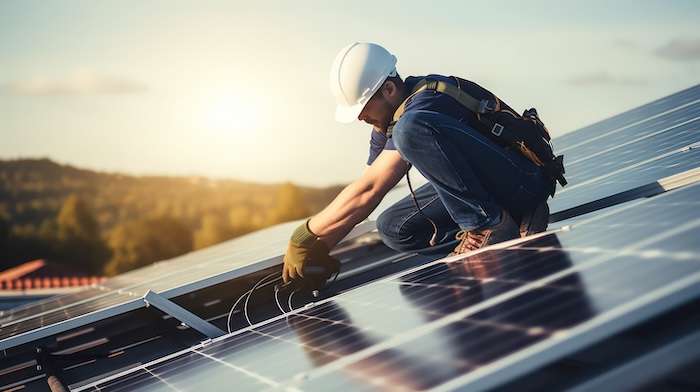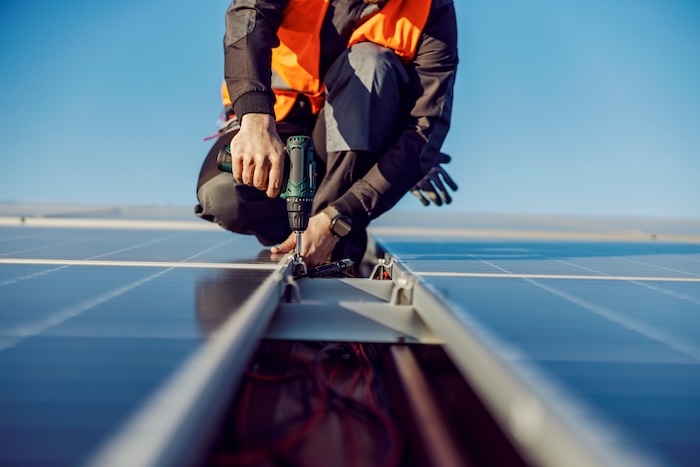Expanding into Solar O&M: A strategic move for installers
The demand for residential solar operations and maintenance (O&M) services is growing rapidly, driven by the increasing number of aging photovoltaic (PV) systems and a surge in orphaned solar projects. As of May 2024, the United States has surpassed five million solar installations.
At the same time, the industry has faced significant upheaval due in part to high interest rates and changes in incentives in some states. In 2023, over 100 residential solar companies across the U.S. — including some national and multi-state installers — closed their doors or declared bankruptcy.
This trend continued into 2024 with another wave of company closures. As more solar installers shut down, they leave behind incomplete or orphaned systems, further amplifying the demand for comprehensive O&M services.
Solar company closures fuel demand for solar O&M services
Some orphaned solar systems have not received permission to operate (PTO) and haven’t been commissioned due to solar company closures. This leaves some homeowners in a difficult position, making loan payments on solar systems that do not provide energy bill savings. In some cases, there has been a lot of negative press, which can reflect poorly on the solar industry as a whole.
Expanding into residential solar O&M presents a compelling opportunity for solar companies looking for new revenue streams. Regardless of incentives and sales trends, solar system installations by defunct companies must be completed.
Plus, solar projects require maintenance and, eventually, repairs. Inverters fail and need to be replaced, and electrical issues arise. By offering reliable O&M services for projects they didn’t install, solar contractors can generate consistent revenue, establish long-term customer relationships, and promote solar industry trust.

The business case for solar O&M
For many solar installers, service departments are primarily focused on fulfilling labor and service warranties for their own installations, often generating little to no revenue. In fact, many service calls are viewed as a hassle, as companies cannot charge for them due to the warranty coverage on labor.
However, installers can transform their service teams into profitable departments by expanding their O&M offerings to include residential third-party installations. This approach is particularly valuable during seasonal lulls, such as winter months, or when supply chain issues delay new installations.
It’s also helpful during slowdowns caused by factors like high interest rates or changing solar incentives, as third-party O&M work can provide a steady revenue stream even when new installations are down. Homeowners with existing systems will always require troubleshooting, inverter replacements, and performance checks, making O&M a reliable revenue source.
Beyond financial incentives, O&M work also has a rewarding human element. Many homeowners have been left stranded with unfinished projects, unable to enjoy the benefits of solar energy. Installers who step in to complete these jobs grow their business and restore trust in the industry. By becoming the “heroes” of the solar industry, O&M providers can build a strong reputation and secure long-term customer loyalty.
Solar O&M solutions
Solar O&M includes a range of services, such as completing installations for system activation, troubleshooting inverter issues, and managing interconnection paperwork. Solar technicians work with various inverter brands, requiring installers to gain familiarity with different technologies. Preventive maintenance is also crucial for ensuring long-term system performance, safety, and compliance while helping homeowners maximize the value of their solar investment.
The ideal technician for completing solar repairs is a skilled field service provider with strong communication skills, competitive pricing, and a valid contractor license. They need to be willing to repair systems they didn’t install and seek help from equipment manufacturers if they are unfamiliar with specific technologies. Although additional equipment manufacturers or industry certifications are beneficial, being a licensed solar contractor is the primary requirement. Therefore, companies licensed in multiple states can access more job opportunities.

Embracing solar O&M for long-term growth
While it may seem daunting for installers to work on projects they didn’t originally install, expanding into solar O&M can open doors to significant growth opportunities. Offering O&M services for third-party systems allows a business to generate steady revenue, help solar orphans, and build a reputation as a reliable company.
Sarah Lozanova is the Content Marketing Manager at GreenLancer, which partners with skilled solar technicians to complete solar O&M projects nationwide. GreenLancer is looking for licensed solar contractors with strong communication skills and competitive pricing to join its network of field service providers.
GreenLancer | www.greenlancer.com
Author: Sarah Lozanova
Volume: 2025 March/April









.png?r=3536)

